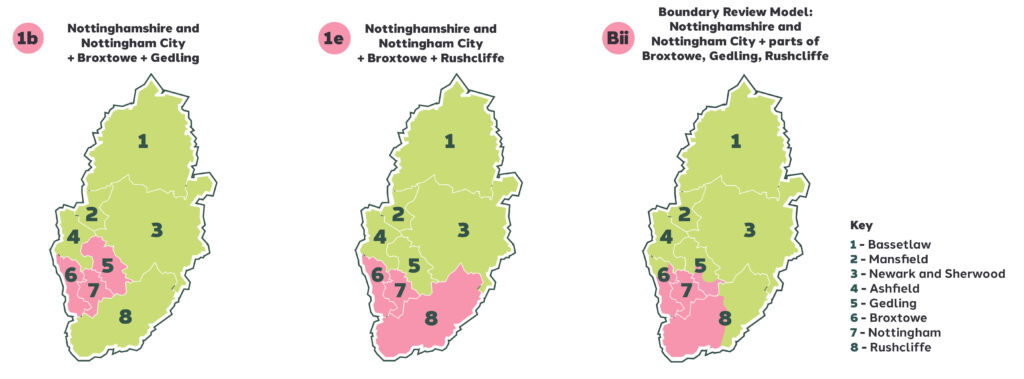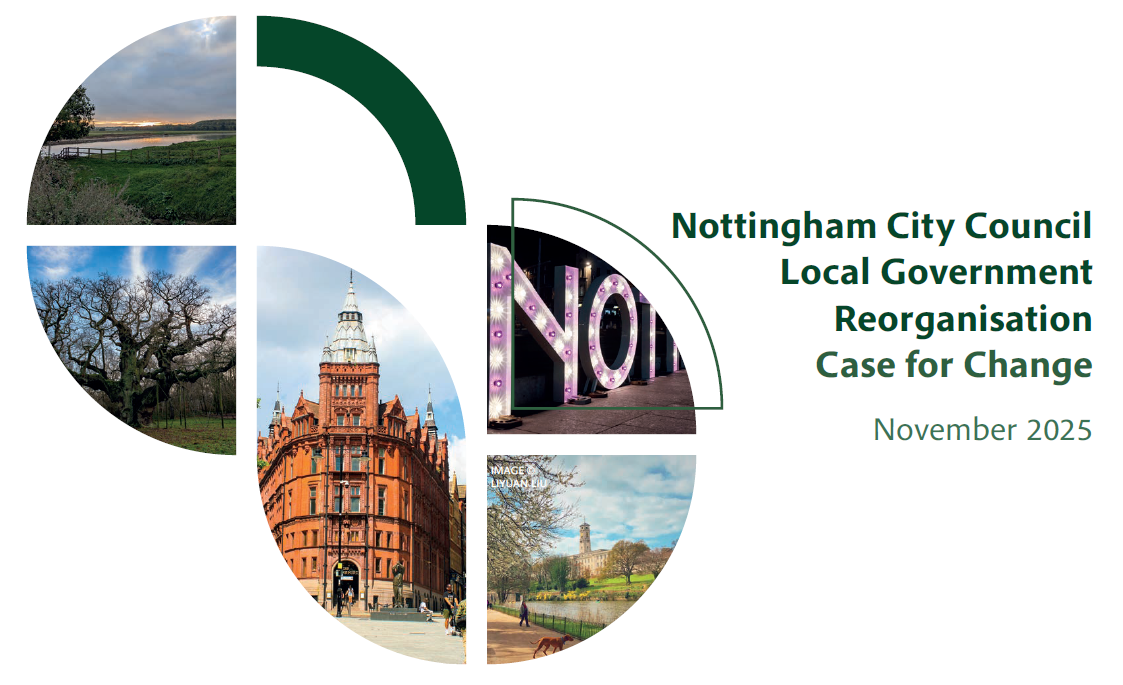Councils in Nottingham and Nottinghamshire have submitted plans for Local Government Reorganisation (LGR) in the region.
Three different proposals have been submitted to government for consideration – known as 1b and 1e, and Bii.

Proposals will go forward for a government-led statutory consultation in the new year.
This is a mandatory element of the LGR process, before the Secretary of State can make a final decision on which option will be taken forward in the region.
All three proposals are available to view on the lgrnotts website, which was set up by the nine councils in Nottingham and Nottinghamshire earlier in the year.
A spokesperson for the councils said:
“This is a significant milestone for LGR in Nottingham and Nottinghamshire in what will be the biggest change in local government for over 50 years.
“It has taken a lot of work to get to this point, and we are proud of everyone who has supported us to get here. The diversity of our geography and politics has meant no single option could be agreed upon, and three proposals have been submitted by seven of the nine councils for government to consider – two have chosen not to support any option.
“The proposals reflect what each council believes is best for our communities, and future sustainability, reflective of the distinctions that define Nottingham and Nottinghamshire.
“Irrespective of our preferences, we remain committed to working together on the chosen outcome for the region – now it is over to the government to decide which go forward to consultation and then implementation.”
Here’s a breakdown of what option each council has supported:
| Bassetlaw District Council | 1e |
| Gedling Borough Council | |
| Mansfield District Council | |
| Newark and Sherwood District Council | |
| Nottingham City Council | Bii |
| Nottinghamshire County Council | 1b |
| Rushcliffe Borough Council |
Ashfield District Council’s Cabinet resolved to not express a preference for a single option – a position that reflects the profound geographic, economic, and social distinctions within Ashfield, Nottingham, and Nottinghamshire. They stressed that this was not a lack of commitment to reform or collaboration, and that regardless of the Government’s final choice, they would ensure active, positive involvement in implementation.
Members at Broxtowe Borough Council resolved not to support any of the proposals. Instead, they agreed to submit a Potential Impacts Assessment on the impact of LGR on Broxtowe residents and to write to the Secretary of State highlighting that the Council was not against Local Government Reorganisation in principle, but to call for the process to be halted in order for it to be considered more fully.
The decision to launch the LGR process was taken by central government, who wrote to local authorities in February formally asking them to submit proposals to create new structures of ‘unitary authorities’ – which is a single tier of local government responsible for all local services in an area. The aim is to create more efficient and effective local government, potentially leading to streamlined services and cost savings.
Currently, council services in Nottingham and Nottinghamshire are delivered differently, depending on where you live.
In Nottinghamshire local services are currently delivered under what is known as a ‘two-tier’ council structure. Nottinghamshire County Council oversees county-wide services such as social care, education, and road maintenance. While several smaller district and borough councils are responsible for more localised services, including waste collection, parks and open spaces, and leisure centres.
Nottingham City Council operates as a ‘unitary authority’, meaning it provides all council services to its 328,000 residents within the city of Nottingham.
Under LGR, all nine existing local authorities would be abolished, to create new unitary councils with a higher population of residents.
It is being proposed that two new unitary councils should be created for Nottingham and Nottinghamshire to replace the current nine.
Now that final proposals have been submitted, government is expected to review submissions before making a final decision on the option that will be taken forward for Nottingham and Nottinghamshire in the Summer of 2026.
Nottingham City Council has submitted a boundary review proposal – known currently as Bii.
The proposal responds to the government’s criteria, but also directly responds to feedback from our residents, partners and businesses, and creates a unique footprint that focusses service delivery of one unitary authority on an urban conurbation and a second unitary authority serving the more rural areas to better reflect how our people and businesses live and work and visit.
Councillor Neghat Khan, Leader of Nottingham City Council said:
“Our current city boundaries no longer reflect the reality of modern Nottingham. While our official population stands at 328,000, more than 750,000 people live within the wider built-up area — many of whom rely on Nottingham’s services and economy every day.
“This proposal is about fairness, efficiency, and a stronger local voice. It responds to all of the criteria set out by government, strongly supports the government’s core missions, and offers councils that are large enough to deliver, yet close enough to listen.
“We have undertaken independent reviews, and comprehensive public engagement exercises. Local MPs, partners, councillors, government-appointed Commissioners to the city and the East Midlands Mayor have all been invited to help shape our proposal.
“The message is clear: people want change that makes sense for the communities they live in, work in, and visit — changes that will serve both unitaries well for the next fifty years. While our boundaries have been built around areas people identify with, they also drive the delivery of services, ensuring the long-term financial health of both unitary councils”
“It is backed by independent analysis and puts forward what we believe to be the best solution for the whole region.”

